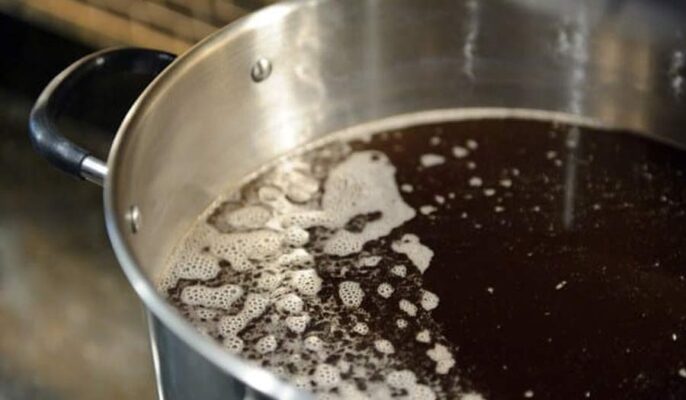Brewing great beer is a dynamic and rewarding experience that is integrated into the world of life around us. Successful brewing can be attributed to the skill of the brewer. The microorganisms that enter beer during the brewing process and can cause spoilage are as diverse as the beer styles. They can impair the taste and smell of beer, cause cloudiness or form biofilms that are difficult to remove: Beer spoilage bacteria and yeast are a major problem for breweries. But, regardless of a winemaker’s skill, they must have a protocol for regular microbial testing throughout the brewing process. In this way, batch losses can be minimized.
Microorganisms that cause beer to spoil
Beer spoilage bacteria and yeast are major problems for breweries. In principle, beer is less susceptible to microbial spoilage. Due to its low nutritional content, high alcohol, hop bitters, CO2 content, and low pH value, it cannot provide good living conditions for most bacteria. But some bacteria can adapt to these conditions. Alcohol-free and hopped beers as well as mixed beer beverages are somewhat more susceptible to microbial spoilage. Craft beers are particularly at risk because they are often not pasteurized or sterile filtered.

Beer contains the following bacteria and yeasts:
|
Microorganisms and yeast |
Features |
|
Lactobacillus brevis |
Belongs to lactic acid bacteria; makes beer cloudy and sour |
|
Pediococcus is harmful |
Causes turbidity and sedimentation, and gives beer a buttery flavor; used intentionally in some beers |
|
Megalococcus |
Produces cesspool odor and rotten egg smell |
|
Pectinium |
Produces cesspool odor and rotten egg smell |
|
diastatic yeast |
Foreign yeasts are also intentionally used in some beers; producing floral or bitter flavors |
|
Pichia anomalies |
Yeast, which can cause cloudiness and flavor defects |
| Dekkera of Brussels |
While Dekkera bruxellensis yeast is integral to the aroma of many beers, Dekkera anomala is considered a harmful yeast. |
|
Enterobacteriaceae |
Causes odor; also serves as indicator bacteria |
| acetic acid bacteria |
Causes odor; also serves as indicator bacteria |
How do microorganisms get into beer?
Air pollution
Microorganisms can take the opportunity to live on the surfaces of brewing equipment or even float in the air inside the brewery. Without strict sanitation measures, these invaders can get into the beer during critical brewing stages.
Raw material quality
The quality of raw materials is crucial in the brewing process and any compromise can lead to contamination. Malt, hops and water can become carriers of spoilage microorganisms if contaminated. Water treatment is especially important because untreated water can introduce unwanted elements into the beer.
Brewery equipment hygiene
Keeping brewery equipment in pristine condition is the cornerstone of preventing spoilage. Tanks, hoses, fermenters and other tools must undergo rigorous cleaning and disinfection. Neglecting this critical step can provide a breeding ground for spoilage microorganisms that are later transferred to the beer during the brewing process.

Fermentation control
During the fermentation process, maintaining precise temperature control is crucial. Fluctuations or improper controls may create an environment conducive to spoilage microorganisms. Brewers must pay close attention to fermentation conditions to ensure that the yeast strain used for the beer is the only one working.
How to detect beer spoilage bacteria?
Rapid detection of pathogens and spoilage microorganisms is a critical step in microbiology and brewing, as microorganisms can negatively impact product quality. The popularity of beer remains high, but the quality of beer must be very high to survive in a competitive market. Therefore, raw materials, product intermediates, final products, surfaces and special areas are constantly monitored through hygiene control procedures.
Cleaning regime
There is evidence that up to 20-25% of craft beers may be contaminated by spoilage bacteria, with some recent data even finding detectable levels of spoilage microorganisms in pasteurized beer. As craft beer companies grow, become more adventurous and produce larger quantities of beer, the storage and shipping time of the finished product may increase.
Additionally, increased production frequency puts stress on the cleaning process. To meet the growing demands of a discerning customer base, it is crucial to check site hygiene and product quality.
BSM detection method
Methods for the detection and identification of BSM must have several characteristics to be most effective in breweries. Most , BSM detection and identification methods should be rapid, specific, accurate, quantitative, sensitive, and cost-effective. Even better, the method should be simple to use and must minimal training. Because ingredients and products are moved throughout the brewery, which increases the risk of contaminant spread, early detection is key to preventing problems from spreading and expanding. Additionally, products that may have aged for long periods of time are particularly susceptible to low-level contamination. Thus, BSM detection/identification methods in breweries need to be sensitive to low levels of contamination that may grow over time and should provide results .
Since frequent routine sampling and testing is key to early detection, even the smallest breweries must do this to prevent financial losses from microbial contamination. Many craft breweries have a limited budget, so the method must be affordable as well.
On-site inspection
On-site inspection technology has been around for some time. Automated techniques The ATP (luciferase) method is now quite common and has proven its value for decades. Generates results very , but the reagents used in ATP analysis can be sensitive to degradation in the presence of certain detergents, especially hypochlorite-based detergents (false negatives), furthermore they are not selective and will pick up any living organisms body and thus may be responsible for false positive results. But it doesn’t tell the brewer exactly what the spoilage microorganisms are.




